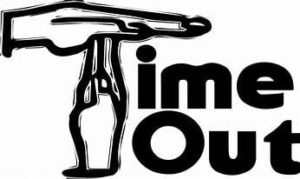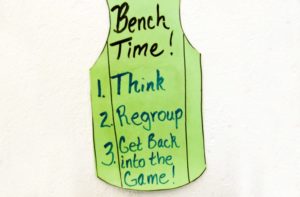Student Contributor: S. Peterson
 Time Out is often used as a punishment, when in fact it is a way to stop bad behavior before it ever starts. Time Out can also be used as a short break time for students.
Time Out is often used as a punishment, when in fact it is a way to stop bad behavior before it ever starts. Time Out can also be used as a short break time for students.
Many people view the term Time Out as a negative, but used correctly, Time Out can be a valuable asset in the classroom. Time Out is used in sports events all the time as a break or to plan for something before it can happen. It is the same in a classroom. Time Out is used as a strategy to acknowledge and stop bad behavior before it happens. This can also be used after a undesired behavior has happened. Students can use Time Out as a breather too if they know they need to step back before they do something they regret. Time Out needs to be used often and early. Early means enforcing Time Out before it happens and often means whenever bad behavior happens. It allows the students to learn what is expected and not okay for them to do.
 The Corrective Phase is the one that relates most to Time Out. It lets the student know and adjust what they are doing wrong. This gives the teacher the opportunity to correct the student's behavior without disrupting the entire class. By just using a sign, the student will know that it is time to go to Time Out. This can also relate to the Preventative Phase by stopping the behavior before it happens. Time Out can also relate to the Supportive Phase by allowing the student to give themselves a "time out" if they feel they need it. This can be student directed because the student oversees their Time Out. It can also be teacher directed because the teacher may sometimes have to tell the student or make them go to Time Out (for younger ages).
The Corrective Phase is the one that relates most to Time Out. It lets the student know and adjust what they are doing wrong. This gives the teacher the opportunity to correct the student's behavior without disrupting the entire class. By just using a sign, the student will know that it is time to go to Time Out. This can also relate to the Preventative Phase by stopping the behavior before it happens. Time Out can also relate to the Supportive Phase by allowing the student to give themselves a "time out" if they feel they need it. This can be student directed because the student oversees their Time Out. It can also be teacher directed because the teacher may sometimes have to tell the student or make them go to Time Out (for younger ages).
More Information –
Tool Source: My idea came from Gus Nollmeyer


